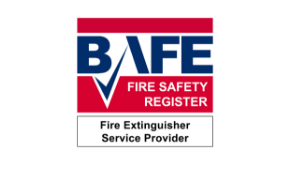Emergency lighting is a critical component of building safety, mandated by law in commercial premises and communal areas of HMOs (houses of multiple occupation) to ensure compliance with fire regulations. At CDS, we bring over 30 years of expertise in designing, installing, and maintaining emergency lighting systems that automatically activate during power failures, illuminating exits, escape routes, and essential areas. Our solutions are fully compliant with British safety standards, including BS5266-1, and our annual maintenance agreements ensure your systems remain reliable and effective, safeguarding both your people and your business.
The Vital Role of Emergency Lighting in Building Safety
When emergencies strike—whether it’s a fire, power outage, or natural disaster—emergency lighting is a critical feature that helps save lives. Its primary function is to provide illumination that guides occupants safely out of a building. However, the significance of emergency lighting extends far beyond mere illumination; it’s a key component of comprehensive safety systems. Let’s delve deeper into the critical aspects of emergency lighting and its importance in building safety.
Safe Evacuation During Emergencies
Emergency lighting ensures that people can safely evacuate a building when the main power supply fails. This is particularly crucial during fires, where smoke can obscure vision, making it difficult to locate exits. Here’s why it matters:
- Visibility in Smoke and Darkness: During a fire, smoke can quickly fill a building, reducing visibility to near zero. Emergency lights, which are often located along escape routes and exits, provide the necessary illumination to guide people out of the building. Even if the primary power fails, these lights are powered by backup batteries or generators, ensuring they function when needed most.
- Illuminated Escape Routes: Emergency lights must illuminate escape routes, including corridors, stairwells, and exits. This is essential because, in an emergency, people may be disoriented and unable to locate the nearest exit. Adequate lighting ensures that escape routes are visible and accessible, reducing the risk of injury or death during an evacuation.
- Panic Prevention: In any emergency, panic can be just as dangerous as the event itself. Emergency lighting helps to reduce panic by providing a clear and visible path to safety. When occupants can see where they are going, they are less likely to panic, making the evacuation process more orderly and efficient.
Compliance with Legal Requirements
The importance of emergency lighting is not just a matter of safety—it’s a legal obligation. Regulatory frameworks across the UK and Europe require buildings to have adequate emergency lighting systems:
- Regulatory Framework: The Regulatory Reform (Fire Safety) Order 2005 in the UK mandates that all commercial buildings and multi-occupancy residential buildings must have proper emergency lighting. This includes not only the installation of emergency lights but also their regular maintenance and testing to ensure they are operational at all times.
- Specific Standards: The British Standard BS 5266-1 provides a detailed code of practice for emergency lighting in premises, ensuring that systems are designed and installed to provide appropriate illumination during an emergency. Failure to comply with these regulations can lead to severe penalties, including fines and legal action. More critically, it exposes building occupants to unnecessary risks.
- Periodic Testing: Compliance isn’t a one-time requirement; it involves ongoing testing and maintenance. For example, monthly functional tests and annual full-duration tests are required to ensure that emergency lights will work during an actual emergency.

Enhancing Safety Beyond Fires
Emergency lighting is crucial not just during fires but in a variety of emergency situations. Here’s how it enhances overall safety:
- Power Outages: In the event of a power outage, emergency lighting ensures that key areas of a building remain illuminated. This is vital in settings like hospitals, where patients are often dependent on electrical equipment. Even in less critical environments, emergency lighting helps prevent accidents during blackouts by illuminating paths and exit routes.
- Natural Disasters: During events such as earthquakes or floods, power supplies are often disrupted. Emergency lighting provides the necessary visibility for safe evacuation or movement within a building until normal power is restored or emergency services arrive.
- Industrial and High-Risk Environments: In high-risk settings, such as chemical plants or large public venues, emergency lighting is part of a broader safety system designed to manage evacuations in a controlled manner. It ensures that even in complex and hazardous environments, people can find their way to safety without delay.
Supporting Modern Building Management
In today’s world, building management systems are becoming increasingly sophisticated. Emergency lighting systems are often integrated into these larger systems, offering several advantages:
- Centralised Control: Modern emergency lighting systems can be integrated with a building’s management system, allowing for centralised monitoring and control. This integration enables facilities managers to monitor the status of emergency lights across the building in real-time, ensuring they are always ready to operate in an emergency .
- Automatic Testing and Reporting: Some advanced systems include automated testing features that regularly check the functionality of emergency lights. These systems can automatically generate reports, highlighting any issues that need to be addressed. This reduces the burden on maintenance staff and ensures compliance with safety regulations without manual intervention .
- Energy Efficiency: Integration with building management systems also allows for more energy-efficient operation. Emergency lights can be configured to operate only when necessary, reducing energy consumption while ensuring they are ready to perform when needed.
Tailored Solutions for Diverse Environments
Different environments require tailored emergency lighting solutions to meet their unique safety needs:
- Educational Institutions: In schools and universities, where large numbers of people may not be familiar with the building layout, emergency lighting is essential for guiding students and staff to safety. In these environments, emergency lighting systems are often integrated with fire alarm systems to ensure a coordinated response during an emergency.
- Healthcare Facilities: Hospitals and other healthcare facilities require specialised emergency lighting solutions that can operate in critical areas such as operating rooms and intensive care units. These systems must ensure that medical staff can continue to provide care even during power outages or other emergencies.
- Industrial Sites: In industrial settings, emergency lighting systems need to withstand harsh conditions and provide reliable illumination in areas where dangerous machinery or hazardous materials are present. Custom solutions in these environments are designed to ensure that all personnel can evacuate safely, even in the most challenging circumstances.
At CDS, we specialise in the installation of high-quality emergency lighting systems tailored to meet the specific safety needs of various environments. Our team of experts ensures that every installation is carried out to the highest standards, in compliance with the latest regulations. Additionally, we offer comprehensive annual maintenance checks to guarantee that your emergency lighting remains fully operational when it’s needed most. These checks include thorough testing and inspections, ensuring that the system is ready to perform effectively in the event of an emergency, providing you with peace of mind and ongoing compliance with safety standards.
Emergency lighting is an essential aspect of building safety, providing life-saving illumination during emergencies. Whether guiding people to safety during a fire, maintaining operations during a power outage, or supporting the overall safety strategy in high-risk environments, emergency lighting is a critical component that cannot be overlooked. With tailored solutions, regular maintenance, and integration into modern building management systems, emergency lighting not only ensures compliance with legal requirements but also significantly enhances the safety and security of all building occupants.
For tailored emergency lighting solutions that meet your building’s specific needs, contact us today.
















